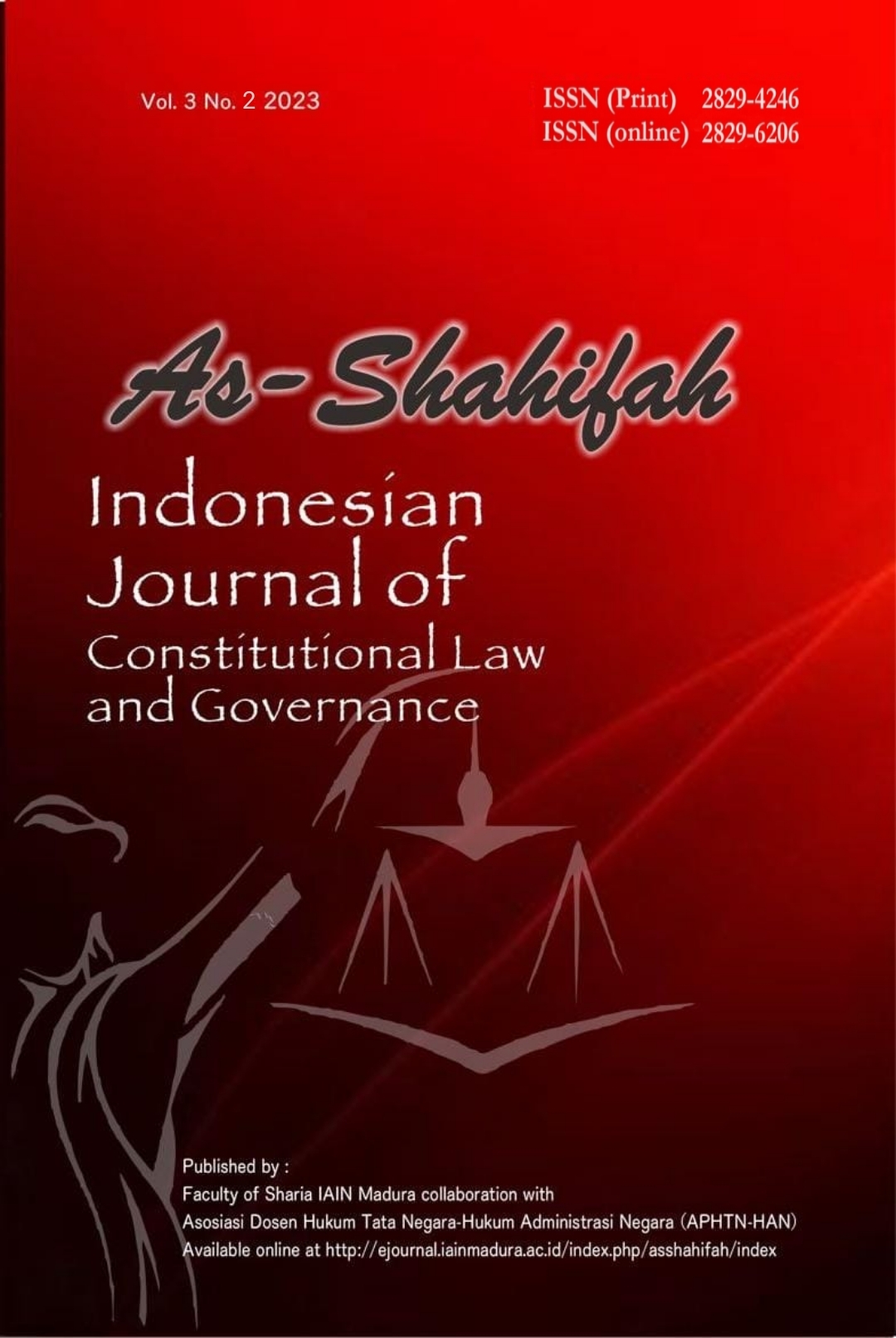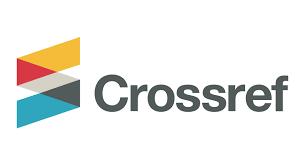Implementasi Penyelesaian Sengketa Industrial Dalam Perspektif Bipartit Menurut Undang-undang Nomor 2 Tahun 2004 Tentang Penyelesaian Perselisihan Hubungan Industrial
 Abstract views: 269
,
Abstract views: 269
,
 PDF downloads: 210
PDF downloads: 210
Abstract
Abstract
In the process of resolving industrial relations disputes, there are two steps that can be taken,namely through litigation and non-litigation (court or out of court), based on Law Number 2 of 2004 concerning industrial relations dispute settlement. It is part of the steps for resolving industrial disputes outside the court (non-litigation) through bipartite negotiations. The bipartite negotiation pathway is an obligation for workers (laborers) and employers to be able to do it when there are disputes or differences of opinion that have the potential to cause impacts and conflicts in industrial relations. Based on the provisions contained in Article 2 of Law Number 2 of 2004, it describes the types of industrial relations disputes including; first; rights dispute, second; conflict of interest, third; layoff disputes, and fourth; disputes between trade unions/labor unions in a particular company. Thus the implementation of the settlement through non-litigation steps with bipartite efforts can be carried out within the period determined by law, namely, no later than 30 (thirty) working days from the start of the bipartite negotiations, then based on Article 6 paragraph 2 of the Law number 2 of 2004 states that every negotiation that takes place must be recorded or the results of bipartite negotiations must be recorded. The approach used in this study uses normative and empirical legal approaches, based on this method researchers can clearly know and study doctrinal laws and the implementation of laws applied in society. thus researchers in providing views or ideas in solving legal problems that occur in society.
Downloads
References
Astarini R. Dwi, Mediasi Pengadilan Salah Satu Bentuk Penyelesaian Sengketa Berdasarkan Asas Peradilan Cepat, Sederhana, Biaya Ringan, (Bandung: PT. Alumni, 2013)
Ari, Penyelesaian Sengketa Hubungan Industrial, (Yogyakarta, UII Press, 2019)
Abdul, Aspek Hukum Penyelesaian Perselisihan Hubungan Industrial, Bandung; PT. Citra Aditia Bandung, 2010. Departemen Pendidikan Nasional, Kamus Besar Bahasa Indonesia, Edisi Ketiga Balai Pustaka, Jakarta, 2005. Undang-Undang No. 13 Tahun 2003 Tentang Ketenagakerjaan. Undang-Undang No. 02 Tahun 2004 Tentang Penyelesaian Perselisihan Hubungan Industrial.
Bambang Joni R., Hukum Ketenaga Kerjaan, (Bandung: Pustaka Setia, 2013)
Dworkin R., Conception of Utilitarianism, (Belgia; Faculty of Law, Katholieke Universiteit Leuven, 1999)
Dja’is Moch, RMJ, Koosmorgono, Membaca dan Mengerti HIR, (Semarang: Fakultas Hukum Undip, 2010)
Husni Lalu, Penyelesaian Perselisihan Industrial Melalui Pengadilan dan Luar Pengadilan, (Jakarta: Raja Grafindo Persada, 2005).
Hakim Abdul, Dasar-dasar Hukum Ketenagakerjaan di Indonesia, (Bandung;PT. Citra Aditya Bakti, 2009)
Ibrahim. J, Metode Penelitian Hukum Normatif dan Empiris, (Depok: Prenada Media Group, 2018)
Jalis Ahmad, dkk, Hukum Bisnis Untuk Perusahaan; Teori dan Contoh Kasus, (Jakarta: Kencana, Cet. XII, 2005),
Khakim Abdul, Aspek Hukum Penyelesaian Perselisihan Hubungan Industrial, (Bandung: PT. Citra Aditia, 2010)
Rapar J.H, Filsafat Politik Plato, (Jakarta: Rajawali Press, 1991)
Soekamto Soejono, Pengantar Penelitian Hukum, (Jakarta; UI Press, 2007)
S. Siswanto., Manajemen Tenaga Kerja Indonesia, Pendekatan Administrasi dan Operasional, (Jakarta: Bumi Aksara, 2003)
Subekti, Hukum Perjanjian, (Jakarta: Intermasa, Cet, XIII, 1991)
Jurnal
Akbar, Alternatif Penyelesaian Perselisihan Hubungan Industrial diLuar Pengadilan, (DIH Jurnal Ilmu Hukum, No. 17; 20013)
Budi Imam, Alternatif Penyelesaian Sengketa Wajib Dalam Penyelesaian Perselisihan Hubungan Industrian, (Jurnal Selisik, No. 5, 2017)
Mamudji Sri, Mediasi Sebagai Alternatif Penyelesaian Sengketa di Luar Pengadilan, (Jurnal Hukum dan Pembangunan Vol. 34, No. 3, Juli-September 2004)
Manurung Mangaraja, Menyelesaikan Hubungan Inndustrial Melalui Perundangan Bipartit, (Jurnal Pionir LPPM Universitas Asahan Vol. 2, No. 4 Januari-Juni 2018)
Noor Tajuddin, Analisis Hukum Terhadap Penyelesaian Sengketa Hutang Piutang Melalui Akta Perdamaian, (Jurnal Kaidah Hukum, Vol. 18, No. 3, 2016)
Rohman Roni Saepul, Perbandingan Hukum Terhadap Penyelesaian Perselisihan Hubungan Industrial Sebelum dan Sesudah Kemerdekaan Indonesia, Fakultas Hukum Universiats Singaperbangsa Karawang, (Jurnal Kertha Semaya, Vol. 9, No. 8, Tahun 2021)
Undang-undang
Undang-undang Dasar 1945
Undang-undang Nomor 2 Tahun 2004
Undang-undang Nomor 13 Tahun 2003
Copyright (c) 2023 As-Shahifah : Journal of Constitutional Law and Governance

This work is licensed under a Creative Commons Attribution-ShareAlike 4.0 International License.
Publishing your paper with As-Shahifah : Journal of Constitutional Law and Governance means that the author or authors retain the copyright in the paper. As-Shahifah granted an exclusive non commercial reuse license by the author(s), but the author(s) are able to put the paper onto a website, distribute it to colleagues, give it to students, use it in your thesis etc, so long as the use is not directed at commercial advantage or toward private monetary gain. The author(s) can reuse the figures and tables and other information contained in their paper published by As-Shahifah in future papers or work without having to ask anyone for permission, provided that the figures, tables or other information that is included in the new paper or work properly references the published paper as the source of the figures, tables or other information, and the new paper or work is not direct at private monetary gain or commercial advantage.
As-Shahifah journal provides immediate open access to its content on the principle that making research freely available to the public supports a greater global exchange of knowledge. This journal is licensed under a Creative Commons Attribution-ShareAlike 4.0.This license lets others remix, tweak, and build upon your work non-commercially, and although their new works must also acknowledge & be non-commercial, they don’t have to license their derivative works on the same terms.
As-Shahifah journal Open Access articles are distributed under this Creative Commons Attribution-ShareAlike 4.0 International License (CC BY-SA). Articles can be read and shared for noncommercial purposes under the following conditions:
- BY: Attribution must be given to the original source (Attribution)
- SA: If you remix, transform, or build upon the material, you must distribute your contributions under the same license as the original.









